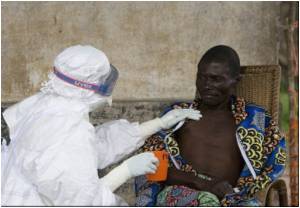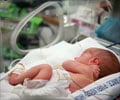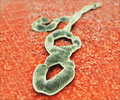The threat of a possible Ebola attack have spurred Congo health authorities to take response measures, officials reported on Monday.

The dead were men from an isolated forest village, Mokouangonda, and had fallen ill after returning from a hunting expedition in the Odzala National Park, it said.
Cases of Ebola have been registered in the park in gorillas but also in 2003 in humans, some of who have died.
Congo director of health Alexis Elira Dokekias confirmed the three latest deaths to AFP but said none of the five suspected cases had tested positive for acute haemorrhagic fever.
"For the moment, all the samples taken have come back negative," he told AFP. "There are no clinical characteristics of Ebola fever."
"We have taken response measures as if it were Ebola fever because it is not far from the Odzala National Park," Elira Dokekias added.
Advertisement
The WHO said that response measures being implemented in the area included epidemiological investigations and infection control.
Advertisement
"If it is negative, it is because it is not acute haemmorraghic fever," said the centre's communication official, Norbert Mouyabi.
A WHO representative in the Congo capital Brazzaville said its own team sent to the area, in the northwestern Shanga region, had reached the same conclusion.
Ebola is one of a family of so-called filoviruses, which cause haemorrhagic fever, a rare but highly lethal disease in which the patient can bleed to death, sometimes from the mouth, ears and eyes.
According to the WHO, of about 1,850 people documented to have had the disease since it first appeared in Africa in 1976, about 1,200 died.
There is no vaccine or effective treatment with patients forced into strict isolation and medical staff working with them required to wear full protection, including surgical gloves and masks.
Source-AFP










